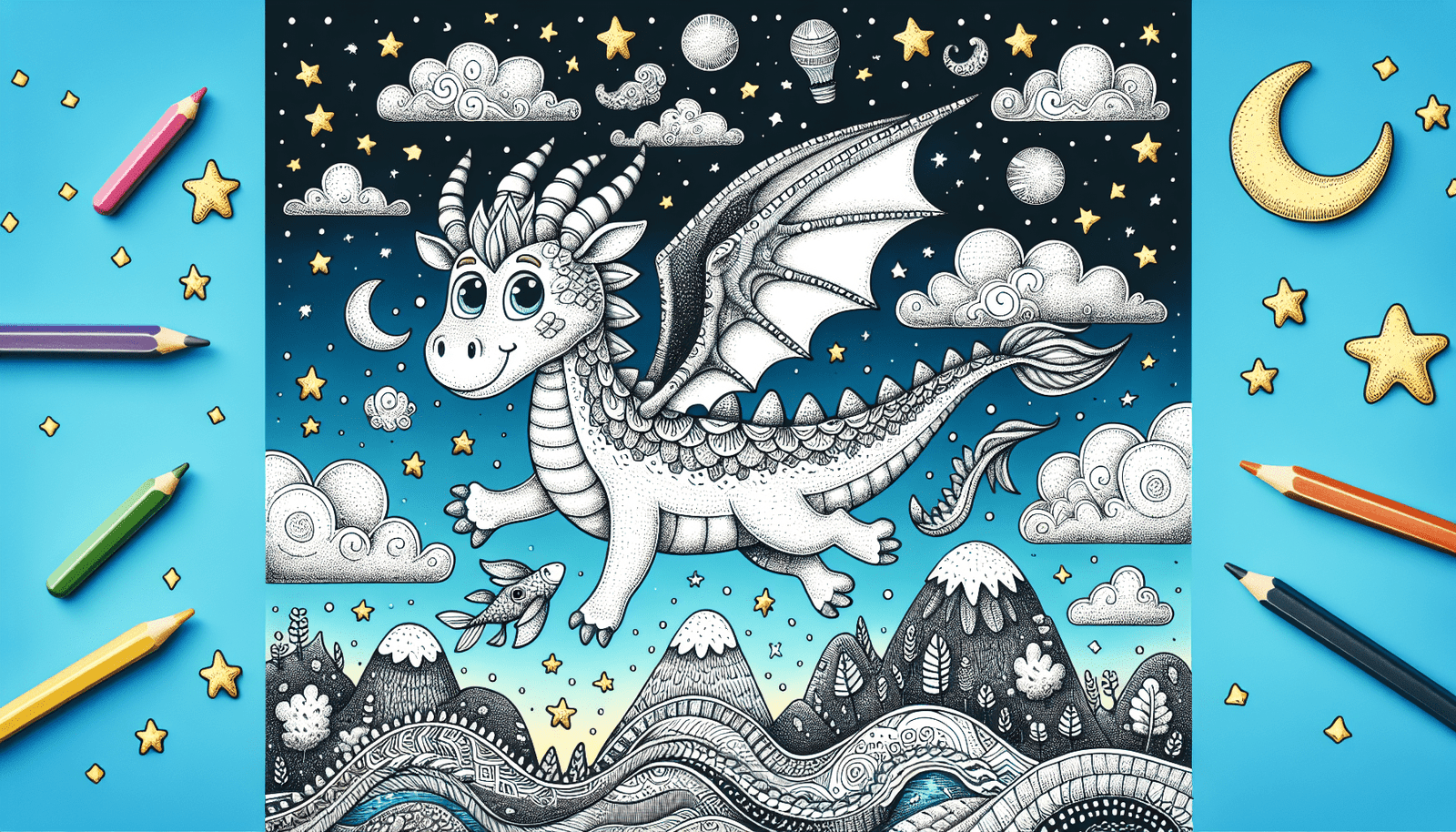Discover the exciting world of children’s book cover illustration and the latest trends that make young readers eager to dive into stories. In “What Are The Latest Trends In Illustrating Children’s Book Covers That Captivate Young Readers?”, you’ll explore the fresh, vibrant styles that are taking the literary world by storm. From whimsical hand-drawn characters to bold, eye-catching colors, you’ll get an insider look at the techniques and designs that spark imagination and curiosity. Perfect for authors, illustrators, and book lovers alike, this guide is your ticket to creating covers that not only stand out on the shelves but also enchant and inspire the young minds who pick them up.
Have you ever wondered what catches a child’s eye when they pick up a book? If you’re designing or illustrating children’s book covers, this is a crucial question. In this article, we’ll explore the latest trends in illustrating children’s book covers that captivate young readers. By the end, you’ll have a well-rounded understanding of the different styles, techniques, and elements that make a children’s book cover irresistible.
Understanding Your Audience
Before you dive into any design or illustration, knowing your audience is key. Children of different ages have varying preferences and respond to different elements.
Age Groups and Preferences
Children’s preferences change as they grow, so it’s essential to tailor your designs to specific age groups.
| Age Group | Preferences |
|---|---|
| Preschool (3-5) | Bright colors, simple shapes, familiar characters |
| Early Readers (5-7) | Bold fonts, interactive elements, clear storytelling |
| Middle Graders (8-12) | Complex scenes, detailed illustrations, subtle humor |
Role of Parents and Educators
Remember, while the book is for the children, parents and educators are often the ones purchasing them. Incorporating elements that appeal to adults, such as educational value or high-quality artistry, can make your cover more appealing to buyers.
Current Trends in Illustrating Children’s Book Covers
The world of illustration is ever-evolving. Let’s dive into some of the latest trends that are making waves in children’s book design!
Bold and Bright Colors
Bright and vibrant colors are practically synonymous with children’s books. They naturally attract a young audience, creating an immediate sense of excitement and fun.
Hand-drawn and Textured Illustrations
There’s a growing shift towards hand-drawn, textured illustrations. These designs often feel more personal and organic, as though they were lovingly created just for the reader.
Ethnic Diversity and Inclusivity
Books are powerful tools for fostering understanding and inclusivity. Illustrations that feature characters from a range of backgrounds help children see themselves and others reflected in the stories they read.
Whimsical and Fantastical Elements
Children’s books are often gateways to fantastical worlds. Illustrations that incorporate whimsy and elements of the fantastical can spark the imagination and transport young readers to new realms.
Minimalistic Design
While vibrant and detailed illustrations hold their place, there’s also a trend toward more minimalistic designs. Simple yet striking covers can stand out on the shelf and appeal to both children and their parents.
Interactive Elements
Covers that offer some form of interaction, such as flaps, textures, or even augmented reality, can make the book immediately engaging. These elements add an additional layer of intrigue and fun.
Techniques and Tools
Illustrators today have a variety of techniques and tools at their disposal. From traditional media to cutting-edge digital tools, the possibilities are endless.
Traditional Media
Traditional media such as watercolors, colored pencils, and inks offer a tactile quality that’s hard to replicate. These materials often provide a unique, handcrafted feel to your illustrations.
Digital Tools
Digital illustration tools like Procreate, Adobe Illustrator, and Photoshop have revolutionized the field. These tools offer endless possibilities for experimenting with different styles, textures, and effects.
Hybrid Techniques
Combining traditional and digital media can yield stunning results. For instance, you might start with hand-drawn sketches and enhance them digitally, blending the best of both worlds.
Typography
Typography is not just about legibility; it’s a part of the illustration. Custom fonts and hand-lettered titles can make your cover unique and memorable.
Psychological Elements
Understanding the psychology behind what attracts children’s attention can be a game-changer.
Colors and Emotions
Certain colors evoke specific emotions. Warm colors like red and yellow can convey excitement and joy, while cooler colors like blue and green can be calming or mysterious.
Character Design
Children often relate to characters more than any other element on the cover. Designing characters with expressive faces and relatable features can make your cover more engaging.
Story and Setting
The cover should give a hint of the story and its setting. An enticing scene or an intriguing glimpse into the world of the book can pique curiosity.
Industry Examples
To better understand how these trends and techniques are applied, let’s look at some successful examples from the industry.
Popular Books
- “The Very Hungry Caterpillar” by Eric Carle – This classic employs vibrant, textured illustrations that have captivated generations.
- “Ada Twist, Scientist” by Andrea Beaty and David Roberts – The cover features bold colors and a charismatic, inclusive character design.
- “Press Here” by Hervé Tullet – A minimalist cover with interactive elements, this book engages both children and adults alike.
Emerging Trends
The following recent books showcase some of the emerging trends in illustration:
- “Julian is a Mermaid” by Jessica Love – This book features hand-drawn illustrations that celebrate diversity and individuality.
- “Dragons Love Tacos” by Adam Rubin and Daniel Salmieri – The whimsical and humor-filled cover appeals to both middle graders and younger readers.
How to Stay Updated
The world of children’s book illustration is always evolving. Here are some resources and techniques to keep your skills and knowledge up to date.
Online Communities
Platforms like Instagram, Behance, and Pinterest allow you to follow other illustrators and see what’s trending. Participating in these communities can provide both inspiration and feedback.
Conferences and Workshops
Attending industry conferences and workshops can be incredibly beneficial. Events like the SCBWI (Society of Children’s Book Writers and Illustrators) conferences offer invaluable networking opportunities and professional development.
Continuing Education
Taking courses, either online or in-person, can keep your skills sharp and introduce you to new techniques. Websites like Skillshare, Udemy, and Coursera offer a variety of classes focused on illustration.
Navigating Feedback and Criticism
Receiving feedback and criticism is a crucial part of any creative process. Understanding how to navigate this can significantly enhance your work.
Constructive Criticism
Seek out constructive criticism from colleagues, mentors, and your target audience. This feedback can provide valuable insights and perspectives that you may have overlooked.
Reading Reviews
Reading reviews of children’s books can offer valuable insights into what works and what doesn’t. Pay attention to comments about the cover art and what aspects are praised or criticized.
Final Thoughts: The Importance of Creativity and Innovation
Ultimately, while trends are important to understand and consider, your creativity and innovation are what will make your work stand out. Trust your instincts, experiment with different approaches, and remember to enjoy the process.
Resources for Further Learning
To help you continue your journey, here are some resources for developing your skills and knowledge further.
Books
- “Illustrating Children’s Books” by Martin Salisbury – This comprehensive guide covers everything from initial sketches to the final product.
- “Writing With Pictures” by Uri Shulevitz – A valuable resource for understanding the relationship between text and illustrations.
Websites
- SCBWI (Society of Children’s Book Writers and Illustrators) – A great resource for networking, events, and professional development.
- Kidlit411 – Offers a wealth of information on writing and illustrating for children, including resources, interviews, and advice.
By keeping these trends and techniques in mind, you can create book covers that not only captivate young readers but also resonate with their parents and educators. Happy illustrating!



